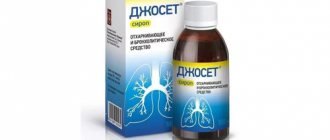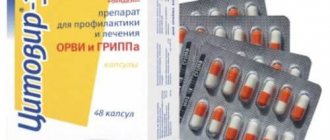Compound
Tetracycline is a broad-spectrum antibiotic. It is effective against various microorganisms, which include:
- streptococci;
- clostridia;
- staphylococci;
- salmonella;
- enterobacteria;
- coli.
The drug suppresses the formation of new bacterial colonies by blocking protein synthesis in their cells. The effect is achieved thanks to the active compound - tetracycline hydrochloride, which is contained in an amount of 0.1 g.
The list of auxiliary connections includes:
- talc;
- starch;
- sucrose;
- calcium stearate;
- gelatin;
- magnesium carbonate.
These are round, slightly convex coated tablets. They are packed in cardboard packs of 20 pieces.
Tetracycline is available in the following dosage forms:
- film-coated tablets: pink, round, biconvex (10 pcs. in blister packs, one or two packs in a cardboard pack; 40 pcs. in dark glass jars, one jar in a cardboard pack);
- ointment for external use 3%: yellow, homogeneous (10 g or 15 g in aluminum tubes, one tube in a cardboard box);
- eye ointment 1%: yellowish or yellowish-brown in color, homogeneous (2, 3, 5 or 10 g in aluminum tubes, one tube in a cardboard box).
Composition per 1 film-coated tablet:
- active ingredient: tetracycline – 0.1 g;
- auxiliary components: basic magnesium carbonate, calcium stearate, corn starch, gelatin, sucrose, tropeolin O, talc, dextrin, acid red dye 2C.
Composition per 1 g of ointment for external use:
- active ingredient: tetracycline – 0.03 g;
- auxiliary components: ceresin, petroleum jelly, solid petroleum paraffin, sodium metabisulfite, anhydrous lanolin.
Composition per 1 g of eye ointment:
- active ingredient: tetracycline – 0.01 g;
- auxiliary components: petroleum jelly, anhydrous lanolin.
Contraindications
- leukopenia;
- children under 8 years of age;
- second and third trimesters of pregnancy;
- breastfeeding period;
- increased individual sensitivity to the components of the drug.
Tetracycline in tablet form is prescribed with caution to patients with renal failure.
- fungal skin infections;
- children under 11 years of age;
- increased individual sensitivity to the components of the drug.
Eye ointment 1%
- impaired renal and/or liver function;
- children under 8 years of age;
- pregnancy period;
- breastfeeding period;
- increased individual sensitivity to the components of the drug.
List of absolute contraindications:
- pregnancy (entire period);
- lactation;
- childhood;
- severe liver damage;
- leukopenia;
- mycoses;
- hypersensitivity to components.
In the absence of direct contraindications, the product can be used, but consultation with a doctor is required.
Hypersensitivity, renal failure, leukopenia, pregnancy, breastfeeding, children under 8 years of age (in children under 8 years of age, tetracycline can cause long-term discoloration of teeth, enamel hypoplasia, and slower longitudinal growth of skeletal bones).
Indications for use
Tetracycline in tablet form is prescribed to treat the following diseases:
- Osteomyelitis;
- Pyelonephritis, cholecystitis, intestinal infections;
- Endometritis, endocarditis, prostatitis;
- Purulent soft tissue infections;
- Brucellosis, syphilis, whooping cough, gonorrhea, actinomycosis, rickettsiosis, ornithosis;
- Conjunctivitis, trachoma, blepharitis;
- Stomatitis, tonsillitis, pharyngitis, otitis media, gingivitis;
- Infectious diseases caused by microflora sensitive to the action of the drug: pleural empyema, bronchitis, pneumonia, tracheitis;
- Furunculosis, acne, infected eczema, folliculitis.
Eye ointment is used in the treatment of bacterial and chlamydial eye infections, including keratoconjunctivitis, blepharoconjunctivitis, blepharitis, keratitis, trachoma, meibomitis, eye lesions due to rosacea.
Externally, Tetracycline in the form of an ointment is prescribed for the treatment of purulent infections of soft tissues, infected eczema, furunculosis, rashes, acne, folliculitis.
Side effects of the substance Tetracycline
Tetracycline
Tetracyclinum (
Tetracyclini)
[4S-(4alpha,4a alpha,5a alpha,6beta,12a alpha)]-4-(Dimethylamino)-1,4,4a,5,5a,6,11,12a-octahydro-3,6,10,12 ,12a-pentahydroxy-6-methyl-1,11-dioxo-2-naphthacenecarboxamide (as hydrochloride or trihydrate)
Yellow crystalline powder, odorless, bitter taste. Very slightly soluble in water, difficult in alcohol, easily soluble in solutions of strong acids and alkalis. Hygroscopic. It's getting dark in the light.
For oral use: infectious diseases caused by sensitive pathogens: pneumonia and respiratory tract infections caused by Mycoplasma pneumoniae; respiratory tract infections caused by Haemophilus influenzae and Klebsiella spp.; bacterial infections of the genitourinary organs, infections of the skin and soft tissues, necrotizing ulcerative gingivostomatitis, actinomycosis, intestinal amoebiasis, anthrax, brucellosis, bartonellosis, chancroid, cholera, chlamydia, uncomplicated gonorrhea, granuloma inguinale, lymphogranuloma venereum, listeriosis, plague, psittacosis, vesicular rickettsiosis, Rocky Mountain spotted fever, typhus, relapsing fever, syphilis, tularemia, yaws.
Ointment for external use: acne vulgaris, bacterial skin infections.
Eye ointment: bacterial eye infections - blepharitis, blepharoconjunctivitis, keratitis, keratoconjunctivitis, meibomitis, trachoma, eye damage due to rosacea.
From the nervous system and sensory organs: increased intracranial pressure, dizziness or unsteadiness.
From the cardiovascular system and blood (hematopoiesis, hemostasis): hemolytic anemia, thrombocytopenia, neutropenia.
From the gastrointestinal tract: decreased appetite, nausea, vomiting, diarrhea, glossitis, esophagitis, gastritis, ulceration of the stomach and duodenum, hypertrophy of the papillae of the tongue, dysphagia, hepatotoxic effect, increased activity of liver transaminases, hyperbilirubinemia, pancreatitis, dysbacteriosis, antibiotic-associated diarrhea.
From the genitourinary system: nephrotoxic effect, azotemia, hypercreatininemia.
Allergic reactions: maculopapular rash, skin hyperemia, angioedema, anaphylactoid reactions, drug-induced systemic lupus erythematosus.
Other: photosensitivity, impaired formation of bone and dental tissue, discoloration of tooth enamel in children, superinfection, candidiasis, hypovitaminosis B.
Antacids, calcium, magnesium, iron salts, cholestyramine - reduce absorption from the gastrointestinal tract. Reduces the effectiveness of oral contraceptives and increases the risk of uterine bleeding, reduces the activity of bactericidal drugs. Increases the nephrotoxicity of methoxyflurane. When used together with vitamin A, the risk of developing intracranial hypertension increases.
Direct exposure to sunlight should be avoided due to the risk of photosensitivity.
Ointment for external use is not recommended for deep or puncture wounds or severe burns.
After using eye ointment, blurred vision may occur. If the condition does not improve within a few days, you should consult your doctor.
| Name | The value of the Vyshkowski Index ® |
| Tetracycline eye ointment 1% | 0.0179 |
| Tetracycline | 0.005 |
| Tetracycline hydrochloride | 0.001 |
| Tetracycline-AKOS | 0.0009 |
| Tetracycline hydrochloride film-coated tablets | 0.0009 |
| Tetracycline-LekT | 0.0005 |
| Tetracycline ointment 3% | 0 |
When taking Tetracycline orally, adverse reactions from the following systems and organs are possible:
- digestive system: nausea, esophagitis, vomiting, gastritis, dysphagia, anorexia, glossitis, hypertrophy of the tongue papillae, ulceration of the duodenum and stomach, pancreatitis, diarrhea, intestinal dysbiosis, hepatotoxic effect, increased activity of liver enzymes;
- hematopoietic system: neutropenia, thrombocytopenia, hemolytic anemia;
- nervous system: instability or dizziness, increased intracranial pressure;
- immunopathological and allergic reactions: skin hyperemia, photosensitivity, angioedema, drug-induced lupus erythematosus, maculopapular rash, anaphylactoid reactions;
- urinary system: hypercreatininemia, azotemia;
- other reactions: discoloration of tooth enamel in children, candidiasis, hyperbilirubinemia, superinfection, deficiency of B vitamins.
When using ointment for external use and ophthalmic ointment, allergic reactions (redness, slight burning and itching of the skin), swelling and hyperemia of the eyelids, photosensitivity and transient blurred vision may occur.
No drug interactions have been described with external and local use of Tetracycline.
When taking tetracycline orally, possible interactions should be considered:
- magnesium-, aluminum- and calcium-containing antacids, cholestyramine and iron preparations reduce the absorption of tetracycline;
- chymotrypsin increases the concentration of tetracycline and the duration of its circulation;
- retinol increases the likelihood of increased intracranial pressure.
When used simultaneously with indirect anticoagulants, the prothrombin index decreases; with penicillins and cephalosporins – the effectiveness of these drugs decreases; with estrogen-containing oral contraceptives - the contraceptive effect is reduced and the risk of breakthrough bleeding increases.
special instructions
Due to the possible development of photosensitivity, it is necessary to limit insolation. With long-term use, periodic monitoring of the function of the kidneys, liver, and hematopoietic organs is necessary. It can mask the manifestations of syphilis, and therefore, if a mixed infection is possible, monthly serological analysis is necessary for 4 months. All tetracyclines form stable complexes with Ca2+ in any bone-forming tissue. In this regard, intake during the period of tooth development can cause long-term staining of teeth in a yellow-gray-brown color, as well as enamel hypoplasia. To prevent hypovitaminosis, vitamins B and K and brewer's yeast should be prescribed.
Tetracycline tablets - instructions for use for adults
The antibiotic is taken orally in tablet form. The drug is swallowed without chewing and washed down with a small amount of water. It is not recommended to replace liquid with other drinks - tea, juices, milk. This will affect the rate of absorption of the medication.
To maintain optimal drug concentrations, it is necessary to maintain an interval between tablet doses. So, for adult patients it is 6-8 hours.
The dosage for an adult varies depending on the nature of the disease and ranges from 200 to 500 mg.
| Disease | Single dosage | Number of appointments per day (times) | Duration of treatment (days) |
| Genital infections (gonorrhea, syphilis) | 500 mg | 4 | 7-10 |
| Acne | 500-2000 mg | 4 | 21 |
| Intestinal disorders | 250-500 mg | 3-4 | 5-7 |
| Inflammation of the respiratory system | 500 mg | 4 | 7 |
| Cystitis, pyelonephritis | 500 mg | 4 | 7 |
The maximum safe daily dose of the drug is 4 g.
Interaction
Due to the suppression of intestinal microflora, it reduces the prothrombin index (requires a reduction in the dose of indirect anticoagulants). Reduces the effectiveness of bactericidal antibiotics that disrupt cell wall synthesis (penicillins, cephalosporins). Reduces the effectiveness of estrogen-containing oral contraceptives and increases the risk of breakthrough bleeding; retinol - risk of developing increased intracranial pressure. Absorption is reduced by antacids containing Al3+, Mg2+ and Ca2+, Fe preparations and cholestyramine. Chymotrypsin increases the concentration and duration of circulation.
Tetracycline tablets - instructions for use for children
The antibiotic is included in treatment regimens for children over 8 years of age. The child takes it at intervals of 6 hours in an individual dosage. The amount of tetracycline hydrochloride recommended by pediatricians for children is determined based on body weight. The calculation is based on the formula 12-25 mg per kilogram of weight:
- for acute intestinal infections, infectious pathologies of the gastrointestinal tract - 12-20 mg per kg every 6 hours;
- for inflammation of the urinary organs - 20-25 mg per kg 4 times a day.
So, for acute cystitis, a child who weighs 30 kg should receive 750 mg of medication per day. This volume is divided into 3 doses (250 mg - 2.5 tablets) with an interval of 6 hours.
Applications and dosages
The drug Tetracycline is indicated for oral administration. Tablets should be taken with plenty of liquid.
The wide range of indications for use explains the wide variability of dosage and administration regimens in the treatment of various ailments. For a more detailed description of the method of use and the required dosages, you should contact a medical institution for consultation with a doctor.
In case of an overdose of Tetracycline, symptoms such as attacks of nausea, vomiting and dizziness occur. In more complex cases, hematuria (blood in the urine) appears. If these symptoms develop, it is recommended to take measures to cleanse the stomach and intestines, as well as take sorbents.
Tetracycline tablets - instructions for use for diarrhea
The antibiotic is effective for digestive disorders of a bacterial nature. Such diseases can be caused by:
- salmonella;
- coli;
- pathogenic microorganisms.
For diagnosis, contact a medical facility. Tetracycline tablets are prescribed if the bacterial nature of the disease is established.
Standard dosage:
- 250 mg for mild diarrhea without other associated symptoms;
- 500 mg for frequent diarrhea (more than 4 times a day) against a background of fever, nausea, and abdominal pain.
In the first three days, Tetracycline tablets are taken every 6 hours to stop the proliferation of pathogenic bacteria, then the drug is taken at intervals of 12 hours for another 3-4 days.
The dose of the drug for children depends on their weight. The drug is given at the rate of 12-20 mg per kilogram of weight. The resulting amount is divided into three doses. The medication is approved after 8 years.
When treating diarrhea with Tetracycline, keep in mind that the antibiotic acts exclusively on the bacterial flora. If an unpleasant symptom is caused by a virus, then you will need to choose a different treatment regimen.
Reviews
Oleg. Three years ago I developed sinusitis, a complication after the flu. I hoped that it would go away on its own, so I didn’t go to the hospital for a long time. It all got to the point where the doctor pierced the sinus twice. The doctor also prescribed me Tetracycline. I took the drug for five days, but then decided to take it for another week. Due to prolonged use, I was covered in everything. I had to get rid of this problem with other medications. But Tetracycline helped with sinusitis.
Ksenia. I often get a rash on my face and décolleté. I tried many medications, including many expensive ones. At my last appointment, the doctor diagnosed me with furunculosis and prescribed tetracycline ointment. The tube cost only 26 rubles. The ointment itself is white and does not smell of anything. At first I applied the product directly to the skin, but it left stains on clothes and bed linen, as it was poorly absorbed. Then she began to apply a bandage to the treated areas. Pimples and redness gradually disappeared. There were no scars or scars left on the skin.
Olga. I was prescribed tetracycline for cystitis. It took five days to drink it, but the effect was noticeable already on the second day. During treatment, my blood pressure rose sharply. Then I didn’t attach any importance to it and didn’t see the connection between feeling unwell and taking the medicine. When I was again tormented by cystitis, I was once again prescribed Tetracycline. The blood pressure situation recurred, so I stopped taking this drug. The antibiotic had to be changed to another. If it weren’t for the side effect, then I would always take it during relapses.
© 2020 – 2020, Evgeniy Nikolaevich Konoplev. All rights reserved.
Tetracycline tablets - instructions for use for colds
A cold is usually understood as ARVI. The disease occurs in an acute form and is accompanied by a number of symptoms:
- temperature increase;
- pain in muscle tissue;
- general weakness;
- redness and sore throat;
- runny nose and swelling of the nasopharynx.
However, the use of antibiotics, including Tetracycline tablets, will be erroneous. The listed symptoms develop due to the activity of viruses that are resistant to antimicrobial medications. Colds require powerful antiviral agents and drugs to strengthen the immune system:
- Kagocel. The tablets are suitable for adults and children over three years of age. The child is given 1 tablet three times a day. Adults take 2 tablets 3 times a day. The total duration of treatment is 4 days.
- Anaferon. Adult patients take it according to the following regimen. On the first day, take 5 tablets at intervals of 30 minutes (2 hours). Then take 3 more tablets at intervals of 3 hours. During all subsequent days, drink one tablet three times a day. The total duration is a week. From 1 month to 18 years it is recommended to take children's Anaferon. These are lozenges. On the first day, drink a total of 8 tablets (the first 5 with an interval of 30 minutes, another 3 tablets - 3 hours). From 2 to 7 days of treatment – 1 tablet 3 times a day. For infants, the drug is pre-dissolved in water.
- Ingavirin. Adult patients take one capsule per day (dosage 90 mg), children over 7 years old - 1 capsule per day (dosage 60 mg). The total duration of therapy is 5-7 days.
Analogues of the drug
Tetracycline antibiotics are a whole range of various lyophysilates, capsules, ointments, suspensions for the total and local elimination of pathogenic microorganisms. The table shows analogues of drugs that can replace the popular tetracycline.
| Active substance | Names of pharmacological product | Manufacturer | Price |
| doxycycline | Vidoccin | ABOLmed LLC, Russia | From 250 rubles |
| oleandromycin | Olethetrin | Biosynthesis JSC (Russia) | From 180 rubles |
| tetracycline with nystatin | Tetracycline with Nystataine tablets | JSC "Biosintez", Russia | From 65 rubles |
| minocycline | Minocycline | AVVV RUS (Russia) | From 500 rubles |
The listed funds can be an alternative replacement. You cannot change the drug product yourself or make changes to the dosage regimen (including the dosage of the drug). This issue is dealt with exclusively by the attending physician.
Tetracycline is a very effective broad-spectrum antibacterial drug that helps cope with various infectious and inflammatory diseases of the body.
The drug exhibits good antimicrobial properties against many pathogenic microorganisms (staphylococci, streptococci, pneumococci, etc.).
It is most often used for the complex treatment of various purulent skin diseases (furunculosis), inflammatory processes of the respiratory tract (sore throat, bronchitis, pneumonia) and the genitourinary system (gonorrhea, syphilis).
This medication, in addition to its antibacterial effect, also has pronounced anti-inflammatory properties, which can significantly speed up the healing process.
As a rule, it is well and fairly quickly absorbed into the body, while the maximum concentration of the active substance in the blood plasma develops within 1-2 hours.
Main indications for use of Tetracycline:
- prevention of the development of secondary inflammatory processes after surgery;
- acute tonsillitis (tonsillitis);
- burns;
- pleurisy (inflammatory disease of the pleural membrane of the lungs);
- chronic or acute form of bronchitis;
- meningitis;
- mastitis (used in complex treatment);
- various septic skin lesions;
- severe infectious diseases (dysentery, syphilis, salmonellosis, typhoid fever, scarlet fever, cholera, etc.);
- gonorrhea;
- serious inflammatory heart diseases (endocarditis, myocarditis);
- acute or chronic cholecystitis (inflammation of the gallbladder);
- various infectious eye diseases (blepharitis, stye).
Attention: before starting to use Tetracycline, it is recommended to consult with your attending physician!
Available in the form of soluble tablets for oral (internal) administration, as well as ointments or suspensions.
Tetracycline tablets with nystatin - instructions for use
The Russian company BIOSINTEZ produces a combined product with two active substances. The tablets are based on the antibiotic tetracycline hydrochloride and nystatin, which is a powerful antifungal compound. The medication successfully fights not only bacteria, but also yeast-like fungi Candida.
This composition allows you to prescribe the drug for:
- candidiasis (thrush);
- bronchitis;
- pneumonia;
- whooping cough;
- pyelonephritis;
- syphilis;
- gonorrhea;
- prostatitis;
- furunculosis;
- infected eczema.
Tetracycline with nystatin is prohibited for children and adolescents under 18 years of age.
Adults take 250 mg 4 times every 24 hours. The course of treatment is 7-10 days.
Side effects
How much to take the drug is decided solely by the attending physician, focusing on the characteristics of the patient’s body and the specifics of the problems that need to be dealt with. It is important to choose the minimum dose of the drug at which the maximum effect would be observed.
Such a clear calculation of the dose is important, since there is always a risk of side effects. And they usually arise against the background of an ill-chosen regimen for taking medicinal products. For long-term therapy, tetracycline lect is recommended to be supplemented with antifungal agents (for example, taken with nystatin). Main side effects:
- digestive system (nausea, vomiting, diarrhea);
- Central nervous system (cephalgia, dizziness);
- skin (photosensitivity, rashes);
- local reactions (vaginitis, dysbacteriosis).
Tetracycline LekT tablets - instructions for use
Tetracycline LekT is an antibiotic in the form of film-coated tablets, packaged in 20, 30 or 40 pieces.
The list of indications for antibiotic use includes:
- conjunctivitis;
- blepharitis;
- osteomyelitis;
- brucellosis;
- gonorrhea;
- syphilis;
- cholecystitis;
- pneumonia.
The basis of the drug is tetracycline, which inhibits protein synthesis in bacterial cells. Take the drug orally according to the following scheme:
- children over 8 years old - 25-50 mg per 1 kilogram of body weight every 6 hours;
- adults – 250-500 mg every 6 hours.
Course duration is 7-10 days.
For children under 8 years of age, other medications are selected, since Tetracycline LecT has an age limit:
- Amoxiclav. The tablets are suitable for children over 12 years of age. Take 1 tablet every 12 hours. A child under 12 years of age is prescribed a suspension. Dose for children under one year old – 0.5 teaspoon three times a day, from one year to 7 years – 1 tsp. three times a day, after 7 years – 2 tsp. three times a day. The duration of treatment is 5-7 days.
- Sumamed. From 6 months, a suspension is given (once a day, 10 mg, or 0.5 ml, of medication per kg). From 3 to 12 years - 125 mg tablets, from 12 years - 500 mg tablets (once daily). Course duration is 5-7 days.
- Suprax. Up to 12 years of age, 8 mg/kg of body weight is prescribed once a day, after 12 years of age - 400 mg once a day. Duration of treatment – 1 week.
Analogs of Tetracycline tablets with instructions for use
Analogues of Tetracycline are: Tetracycline-AKOS, Tetracycline-LekT.
Doctors prescribe analogues if:
- there are contraindications to the use of Tetracycline;
- hypersensitivity to components was diagnosed;
- analyzes show the resistance of a particular strain of microorganisms.
Ciprofloxacin
Tablets containing ciprofloxacin hydrochloride are available in 250 or 500 mg doses. Prescribed for bacterial infections of the ENT organs, digestive tract, genitourinary system, skin, bone tissue.
I take the drug orally twice a day, 250 or 500 mg, depending on the severity of the symptoms. In some cases, the dose is increased to 750 mg (for acute urinary tract infections). The duration of the course varies from 5 to 15 days.
Contraindications include:
- pregnancy;
- breast-feeding;
- sensitivity to components;
- age less than 18 years;
- deficiency of glucose-6-phosphate dehydrogenase.
The cost of the drug starts at 20 rubles per pack of 10 tablets of 250 mg. The price of the drug 500 mg is from 80 rubles.
Amoxicillin
An antibiotic containing the same substance. It belongs to the group of penicillins and is effective for:
- peritonitis;
- cystitis;
- stomach ulcer;
- sinusitis;
- otitis;
- salmonellosis;
- typhoid fever.
Tablets are taken three times a day, 500 mg. For children, the dose is halved. Duration of therapy is 5-12 days.
Amoxicillin acts sparingly, therefore it has a minimal list of contraindications. The medication is prohibited in case of individual intolerance. It can be taken during pregnancy and in childhood from 5 years of age under the supervision of a specialist.
This is an inexpensive drug. It can be found in pharmacies for 40-100 rubles.
Flemoxin Solutab
This is the latest generation drug. It contains amoxicillin. The tablets are dispersible, meaning they must be dissolved in water before use. This increases the availability of the active substance and allows it to quickly penetrate the bloodstream and begin to fight infection.
Flemoxin Solutab is taken for bacterial diseases of soft tissues, ENT organs, gastrointestinal tract, excretory and reproductive systems.
The dose of the medication depends on the age of the patient:
- babies up to one year - 30-60 mg per kg of body weight per day;
- from 1 to 3 years – 250 mg;
- from 3 to 10 years – 375 mg;
- after 10 years – 500-750 mg;
- adults – 500-750 mg.
Infants up to one year old receive the drug three times a day. All others divide the indicated dosage into two doses per day.
Flemoxin Solutab is a modern and safe analogue of Tetracycline. It should not be taken only if the components are intolerant. Among the disadvantages, one can note the high cost - from 250 to 500 rubles.
Analogs for diarrhea
Tetracycline analogues include Metacycline, Minocycline, Doxycycline, Oletetrin (combination with a macrolide). These drugs belong to the tetracycline series and are used for diarrhea caused by certain pathologies.
Tetracycline is a well-known broad-spectrum antibacterial agent. For diarrhea, it is used when its cause is one of the indications for this drug. The drug should be taken only as prescribed by a doctor and strictly in accordance with the instructions, taking into account interactions with other medications and existing contraindications.
Previous post How to use Fthalazol for diarrhea?
Next entry How to take Linex for diarrhea in adults and children?
Pharmacology
Streptococcus spp., including Streptococcus viridans, Streptococcus pneumoniae (however, beta-hemolytic streptococci of group A, including 44% of Streptococcus pyogenes strains and 74% of Streptococcus faecalis strains are resistant to tetracycline), is also effective against other microorganisms: Actinomyces spp.
, Bacillus anthracis, Balantidium coli, Borrelia recurrentis, Chlamydophila (Chlamydia) psittaci, Chlamydophila (Chlamydia) trachomatis, Clostridium spp., Entamoeba spp., Fusobacterium fusiforme, Mycoplasma pneumoniae, Rickettsiae, Propionibacterium acnes, Treponema pallidum, Treponema pertenue, Ureaplasma urealyticum.
Microorganisms resistant to tetracycline: Pseudomonas aeruginosa, Proteus spp., Serratia spp., most strains of Bacteroides spp. and fungi, viruses.
bile, synovial, ascitic, cerebrospinal (in the latter the concentration is 10–25% of that in plasma), selectively accumulates in bones, liver, spleen, tumors, teeth. Passes through the placenta and enters breast milk. Volume of distribution - 1.3–1.6 l/kg. Slightly metabolized in the liver.
T1/2 - 6-11 hours, with anuria - 57-108 hours. It is found in urine in high concentration 2 hours after administration and remains at an effective level for 6-12 hours; in the first 12 hours, up to 10–20% of the dose is excreted by the kidneys. In smaller quantities (5–10% of the total dose) it is excreted with bile into the intestine, where partial reabsorption occurs, which promotes long-term circulation of the active substance in the body (enterohepatic circulation). During hemodialysis it is removed slowly.
Tetracycline tablets - price
The cost of the medication varies from 40 to 60 rubles, depending on the manufacturer:
- Biosynthesis of PAO – from 55 rubles;
- Biokhimik JSC – from 45 rubles;
- Tyumen Chemical Plant OJSC – from 60 rubles.
In Ukraine, the medicine can be purchased for 14-16 UAH.
The low cost along with its effectiveness makes Tetracycline an indispensable antibiotic in the treatment of bacterial infections.
274 Katerina Ostrovskaya 11/19/2019









